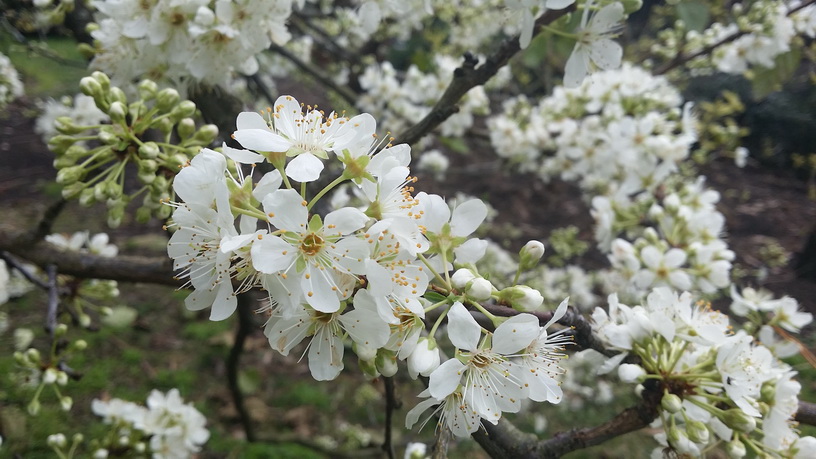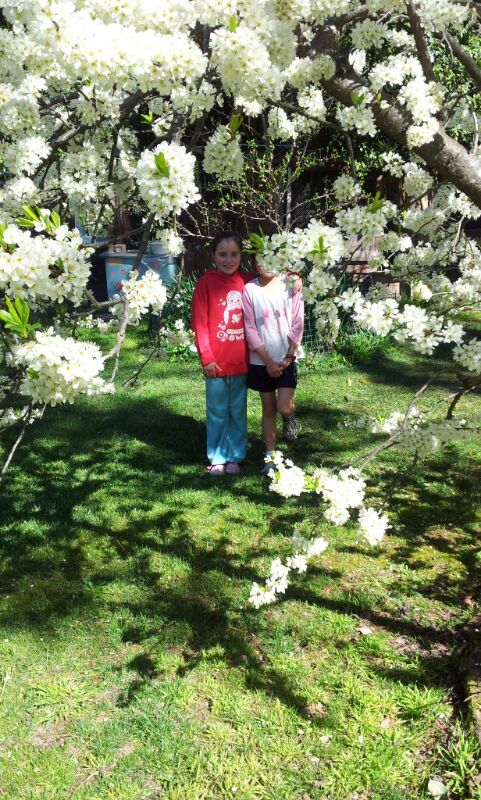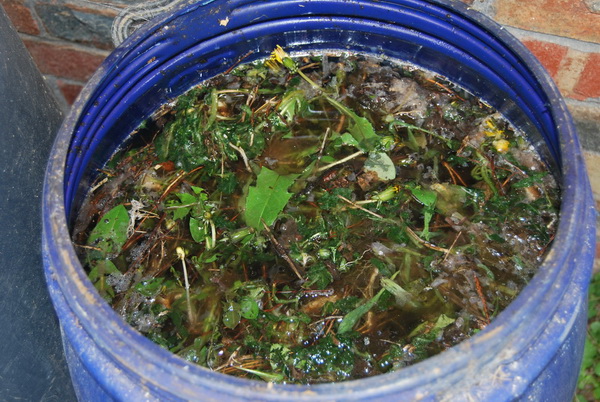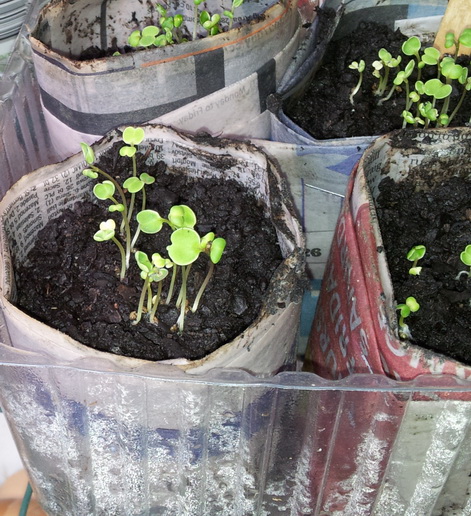September in My Green Garden
The blossoms from most of the fruit trees are out in full now, the air redolent with the scent of plum and almond flowers. Their glory is fleeting, which means that now I could wax lyrical about metaphorical connotations; or I could talk about a more pressing concern: making sure that there are bees about to do some pollinating for me. We do have a hive but last year it was very wet when the blossoms were out and the bees don't like the rain. It's a triple B that's needed: blossoms, bees and blue skies!
With spring finally showing signs, we start to look ahead to the summer produce garden. It's time to top-dress my fruit trees with the compost that has been maturing over winter, or a good watering in with some worm castings. Both these will introduce some beneficial bacteria and other good microscopic critters to the soil to keep the trees as healthy as possible. I'll also add some pelletised animal manure (you know, the stinky stuff!), some rock dust for micro-nutrients and then top with some fresh mulch. The citrus trees will need to wait a few weeks to be fed, probably by the end of this month, as I want to wait until the weather and the soil warms a bit so that the citrus can take up the food I need to give them.
Winter veg are still cropping so I can’t do anything about rejuvenating those beds just yet, but there’s still time. By soil rejuvenation I mean adding back what was removed when I cropped the vegies - basically, adding organic matter back to the soil. In some places, I do practice chop and drop, where I will chop up the vegetation removed and let it rot back on the soil from where it came, but not in all places. This is especially true when I pull out leafy greens to feed to my chooks. Soil levels will eventually drop if organic matter is not replaced and will become very poor after a season or two. If you don't make compost, you can buy it or use other organic matter. My favourite is cow manure, followed by mushroom compost. Other manures are stronger and can be considered fertilisers, rather than soil conditioners.
The first sunny day in spring sees queues forming at nurseries when people are keen to get their vegie patches back into action. A common mistake it to think that the soil temperature matches the ambient temperature at the start of spring but it definitely takes a bit longer to warm up. Warm season plants, such as the tomatoes, will languish and not grow strongly when placed in cold soil, so I never bother trying to get them in too early. However, if you have access to a glasshouse, you might consider it.
So while I am waiting for the soil to warm up, this is what I will be doing:
- Weeds will be coming out of their winter dormancy now and will be springing up everywhere. They are the result of seeds blown into your patch and waiting for the right soil temperature to germinate. Don't waste them! I gather them up and (after giving the chooks a good feed of these greens) place them in a large bucket that has a lid. I then fill it up with water and leave the weeds there for several weeks. The nutrients leach out into the water and you end up with a nutritious weed tea for your plants - a sort of free fertiliser! Warning: it will stink!
- Summer seeds that need warmth to germinate will be going into punnets and biodegradable pots and I’ll get some heat to them to start the germination process. I already have tomatoes started from seed using the heat of the compost bin contents to get them started. As soon as they showed signs of life they were moved to my mini glasshouse, which is just one of those cheapie structures covered in clear plastic.
- Later in the month it’s time for the cucumbers, sunflowers and corn, all seeds that can go directly into the soil when it’s much warmer, but I want to get them started a bit earlier. They would all suffer from transplant shock so they will be going into pots that I can actually plant – my biodegradable newspaper pots and the empty toilet rolls that I am busy collecting.
- Some seeds will go straight into the soil as they don’t need the soil to be so warm, such as lettuces and I’ll try some summer beans too. I was surprised last year when I put some in late September and they actually germinated and produced well, much earlier than I had thought possible.
- The potted citrus trees will need some care. They all look like they’re suffering a bit from the very cold winter we’ve had so will need a good feed. I am noticing too that the baby snails are out in force. They manage to hide very well and come out to nibble on the newest leaves.
- In the kitchen, time to get preserving the cumquats which are prolific again this year. It would have to be the most fiddly of all marmalades to make, but also the most worthwhile. And the coriander that looks like it’s about to do the same will be pulled up so that I can harvest the roots and turn them into a delicious Thai-inspired marinade. Some I will leave to flower so that they become a landing pad for pollinating and predatorynsects, and to ensure my supply of coriander again next year.
- My apple trees were affected by codling moth last year so I will aim to try and prevent them infesting the espaliered apples again this year. At this time of the year, I will put down the sticky double-sided horticultural tape, so that the hatched moths get stuck as they migrate back up the tree. The male moths will have flitted off, ready to come back and find a female who will then lay eggs on the apple tree leaves. It is the larvae from these eggs that hatch out into very hungry caterpillars. so getting to them is a multi-pronged approach.



